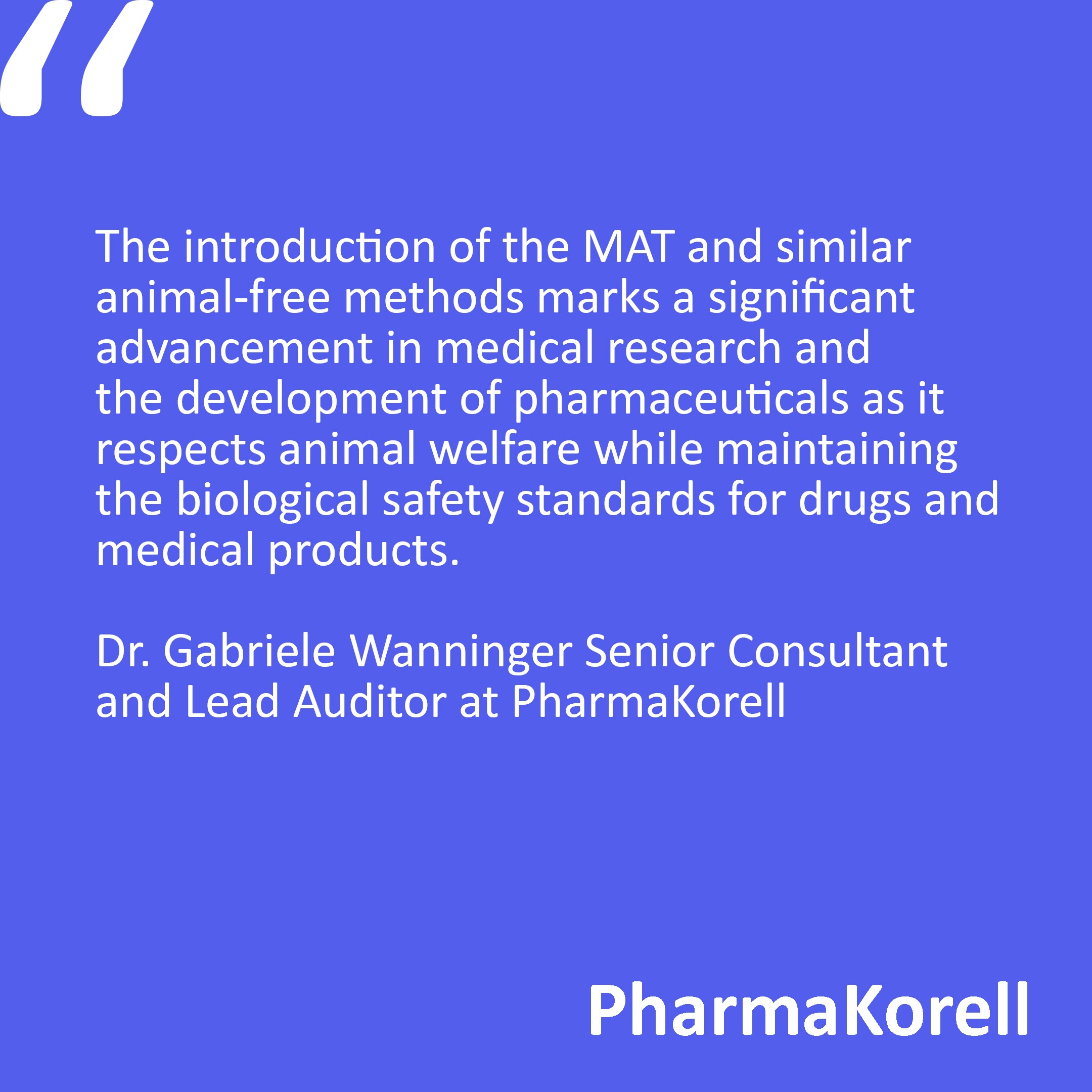Until a few years ago, the rabbit pyrogen test was a common method to assess the pyrogenic (fever-inducing) effects of pharmaceuticals and medical devices. This test involved injecting rabbits with a sample of the medication to observe whether a fever developed, indicating the presence of pyrogenic substances. However, this test was associated with ethical concerns as it caused pain to the animals and compromised their welfare.
Since the 2000s, the pyrogen test is increasingly being replaced by the Monocyte Activation Test (MAT). The MAT is an animal-free method that relies on human monocytes, which are a type of white blood cell. These cells react to pyrogenic substances by releasing specific inflammatory markers that can be detected using modern testing methods.
The MAT offers several advantages:
- Animal-free: It does not require animals, representing an ethical improvement.
- Safety: Since human cells are used, the test is closer to the actual human body’s response than the rabbit test.
- Reliability: The MAT has proven to be at least as reliable as the traditional rabbit test in identifying pyrogenic substances.
The introduction of the MAT and similar animal-free methods marks a significant advancement in medical research and the development of pharmaceuticals as it respects animal welfare while maintaining the biological safety standards for drugs and medical products.
The European Pharmacopoeia Replaces the Pyrogen Test with the MAT
As part of ongoing efforts to reduce animal testing and improve ethical standards in medical research, the European Pharmacopoeia has taken a significant step: the traditional rabbit pyrogen test will be replaced by the Monocyte Activation Test (MAT) from July 2025. From this date, Monograph 5.1.13 “Pyrogenicity” together with Monograph 2.6.30 “Monocyte Activation Test” in the European Pharmacopoeia will mandate the use of the MAT for pyrogen testing. The Monocyte Activation Test (MAT) can detect both endotoxins and non-endotoxin pyrogens in vitro and must be validated for each specific product.
Manufacturers of pharmaceuticals and medical devices must now prepare to adopt the MAT as the standard method for determining pyrogenicity, which is a crucial contribution to reducing animal testing and promoting alternative testing methods.
—
Dr Wanninger is a licensed pharmacist and has worked for over 25 years in state pharmaceutical supervision as a GMP, GDP, and GCP inspector, and most recently for 16 years as the Head of the Inspectorate at the Government of Upper Bavaria. She has extensive experience in regulatory affairs related to pharmaceutical and medical device law, as well as in conducting third-country inspections on behalf of the EMA.
She was a member of several expert groups within the ZLG (Central Authority of the Laender for Health Protection) and contributed to international procedures of the European Commission. Additionally, Dr Wanninger has participated in several pharmaceutical projects with gtz/giz and PTB in Asia and Africa.
Since February 2023, Dr Wanninger has been working as a Senior Consultant and Lead Auditor at PharmaKorell.




